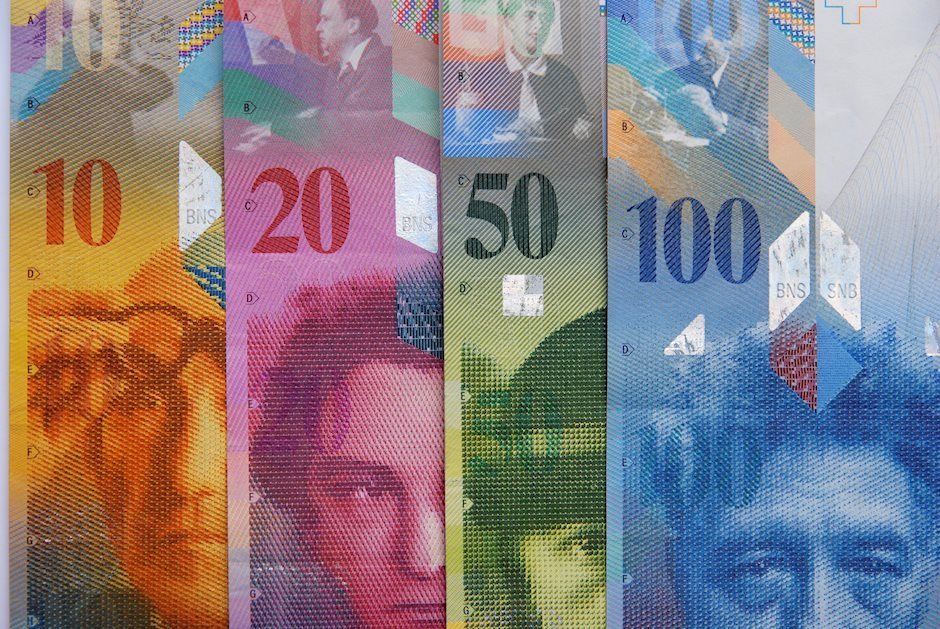USD/CHF extends decline toward 0.8450 ahead of JOLTS Job Openings
- USD/CHF loses ground as traders adopt caution ahead of key economic data from the United States.
- The US Dollar faces challenges as US Treasury yields extend losses amid rising odds of a Fed rate cut.
- Swiss Consumer Price Index eased to 1.1% YoY in August, down from July’s 1.3% and below market expectations of 1.2%.

USD/CHF trades around 0.8480 during the early hours on Wednesday, extending losses for the second successive session. Traders adopt caution ahead of key economic data due this week, including the ISM Services PMI and Nonfarm Payrolls (NFP). This data could shed light on the potential size of an expected rate cut by the Fed this month. Furthermore, the Fed Beige Book and JOLTS Job Openings will be eyed later in the North American hours.
The Greenback depreciates due to lower Treasury yields. The US Dollar Index (DXY), which measures the value of the US Dollar (USD) against its six major peers, trades around 101.60 with 2-year and 10-year yields on US Treasury bonds standing at 3.86% and 3.83%, respectively, at the time of writing.
However, the Greenback received support after the release of the ISM Manufacturing PMI. The index inched up to 47.2 in August from 46.8 in July, falling short of market expectations of 47.5. This marks the 21st contraction in US factory activity over the past 22 months.
In Switzerland, the Swiss Federal Statistical Office released data on Tuesday, showing that the Consumer Price Index eased to 1.1% year-on-year in August, down from July’s 1.3% and below market expectations of 1.2%. Meanwhile, the CPI (MoM) reported no change at 0.0%, against the 0.1% rise in August.
Additionally, Switzerland's Gross Domestic Product (GDP) grew by 0.7% quarter-on-quarter in the second quarter, beating market forecasts and previous period's 0.5% gain. This marked the fastest economic expansion since the second quarter of 2022. Meanwhile, annual GDP rose 1.8% for Q2, following the previous increase of 0.6%.
Swiss Franc FAQs
The Swiss Franc (CHF) is Switzerland’s official currency. It is among the top ten most traded currencies globally, reaching volumes that well exceed the size of the Swiss economy. Its value is determined by the broad market sentiment, the country’s economic health or action taken by the Swiss National Bank (SNB), among other factors. Between 2011 and 2015, the Swiss Franc was pegged to the Euro (EUR). The peg was abruptly removed, resulting in a more than 20% increase in the Franc’s value, causing a turmoil in markets. Even though the peg isn’t in force anymore, CHF fortunes tend to be highly correlated with the Euro ones due to the high dependency of the Swiss economy on the neighboring Eurozone.
The Swiss Franc (CHF) is considered a safe-haven asset, or a currency that investors tend to buy in times of market stress. This is due to the perceived status of Switzerland in the world: a stable economy, a strong export sector, big central bank reserves or a longstanding political stance towards neutrality in global conflicts make the country’s currency a good choice for investors fleeing from risks. Turbulent times are likely to strengthen CHF value against other currencies that are seen as more risky to invest in.
The Swiss National Bank (SNB) meets four times a year – once every quarter, less than other major central banks – to decide on monetary policy. The bank aims for an annual inflation rate of less than 2%. When inflation is above target or forecasted to be above target in the foreseeable future, the bank will attempt to tame price growth by raising its policy rate. Higher interest rates are generally positive for the Swiss Franc (CHF) as they lead to higher yields, making the country a more attractive place for investors. On the contrary, lower interest rates tend to weaken CHF.
Macroeconomic data releases in Switzerland are key to assessing the state of the economy and can impact the Swiss Franc’s (CHF) valuation. The Swiss economy is broadly stable, but any sudden change in economic growth, inflation, current account or the central bank’s currency reserves have the potential to trigger moves in CHF. Generally, high economic growth, low unemployment and high confidence are good for CHF. Conversely, if economic data points to weakening momentum, CHF is likely to depreciate.
As a small and open economy, Switzerland is heavily dependent on the health of the neighboring Eurozone economies. The broader European Union is Switzerland’s main economic partner and a key political ally, so macroeconomic and monetary policy stability in the Eurozone is essential for Switzerland and, thus, for the Swiss Franc (CHF). With such dependency, some models suggest that the correlation between the fortunes of the Euro (EUR) and the CHF is more than 90%, or close to perfect.
Author

Akhtar Faruqui
FXStreet
Akhtar Faruqui is a Forex Analyst based in New Delhi, India. With a keen eye for market trends and a passion for dissecting complex financial dynamics, he is dedicated to delivering accurate and insightful Forex news and analysis.

















